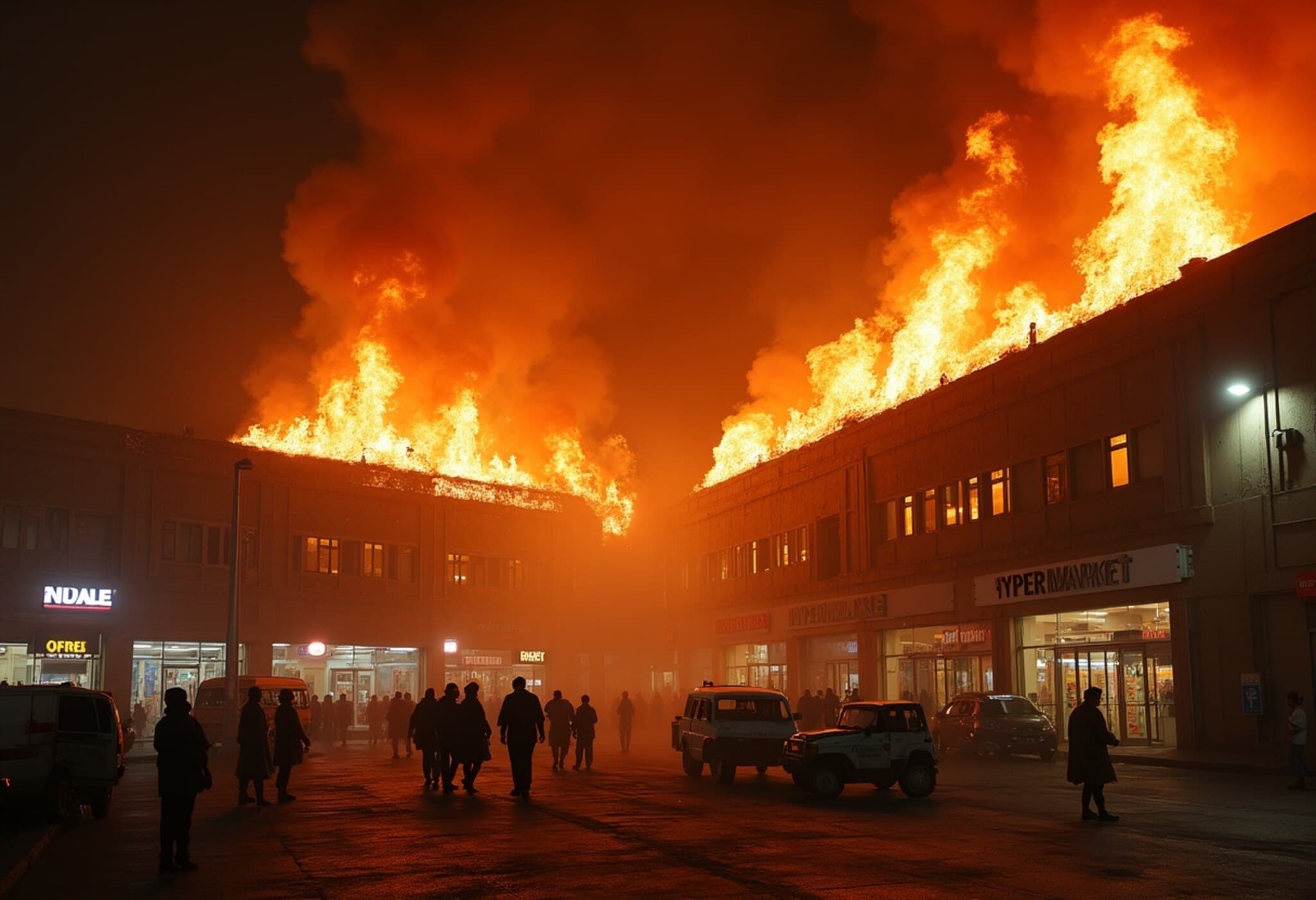Tragic Blaze at Kut City Hypermarket Leaves Dozens Dead
In a heartbreaking incident from eastern Iraq, a massive fire engulfed a five-story hypermarket in Kut city late on July 16, 2025, resulting in the deaths of at least 50 people and injuring many others. The catastrophe has sent shockwaves through the community and brought renewed scrutiny to building safety standards in the region.
The Night of the Fire: A Building Consumed by Flames
Social media footage rapidly spread across platforms showed the huge commercial building completely ablaze as firefighters worked tirelessly overnight to bring the inferno under control. Witnesses speak of a scene marked by frantic rescue efforts and urgent evacuations as the fire consumed multiple floors.
While independent verification of these videos remains limited, local authorities and Iraq’s state news agency INA have confirmed the scale and severity of the disaster.
Official Response and Investigation Underway
Wasit province governor Mohammed al-Miyahi conveyed the gravity of the tragedy to INA, stating, "The number of victims has reached about 50 people, martyrs and injured, in the tragic fire at a major shopping centre that broke out late Wednesday."
The cause of the blaze remains unknown, but officials have pledged to announce preliminary investigation findings within 48 hours. In a significant development, Governor al-Miyahi also revealed that lawsuits have been filed against the building and mall owners, signaling potential legal repercussions amidst concerns about negligence or safety violations.
Context and Broader Implications: Building Safety in Iraq
This devastating fire highlights persistent challenges in infrastructure safety across Iraq, a country still grappling with post-conflict reconstruction and limited regulatory enforcement. Multi-story commercial buildings such as hypermarkets serve as vital economic hubs but also pose elevated risk if fire safety protocols and emergency preparedness are insufficiently maintained.
Experts warn that inadequate fire exits, poor building materials, and lax inspections commonly exacerbate the human toll during such emergencies. This tragedy raises urgent questions about the adequacy of safety regulations and governmental oversight in protecting civilians.
Legal and Social Repercussions
- Accountability: The filing of lawsuits may lead to greater transparency around ownership responsibilities and prompt stricter enforcement of safety codes.
- Policy Reform: There is potential for new legislative measures or amendments to enhance public safety standards in commercial buildings nationwide.
- Community Impact: Families of victims and survivors face enormous physical and emotional trauma, calling for support systems and humanitarian aid.
What Comes Next?
As investigations continue, the eyes of Iraq and the international community remain fixed on Kut city, hoping lessons are learned to prevent such tragedies in the future. The incident serves as a somber reminder of the human cost when safety precautions fail, pressing authorities to reinforce measures that safeguard public spaces.
Editor’s Note
This devastating fire underscores both the fragility of public safety infrastructure in Iraq and the urgent need for systemic change. While the immediate priority is caring for victims and their families, the long-term imperative lies in strong regulation, transparent governance, and robust emergency planning to avert future disasters. How will Iraqi authorities balance reconstruction priorities with enforcing rigorous safety standards? And will the lessons from this tragedy translate into meaningful action? These remain critical questions as the community mourns and rebuilds.











